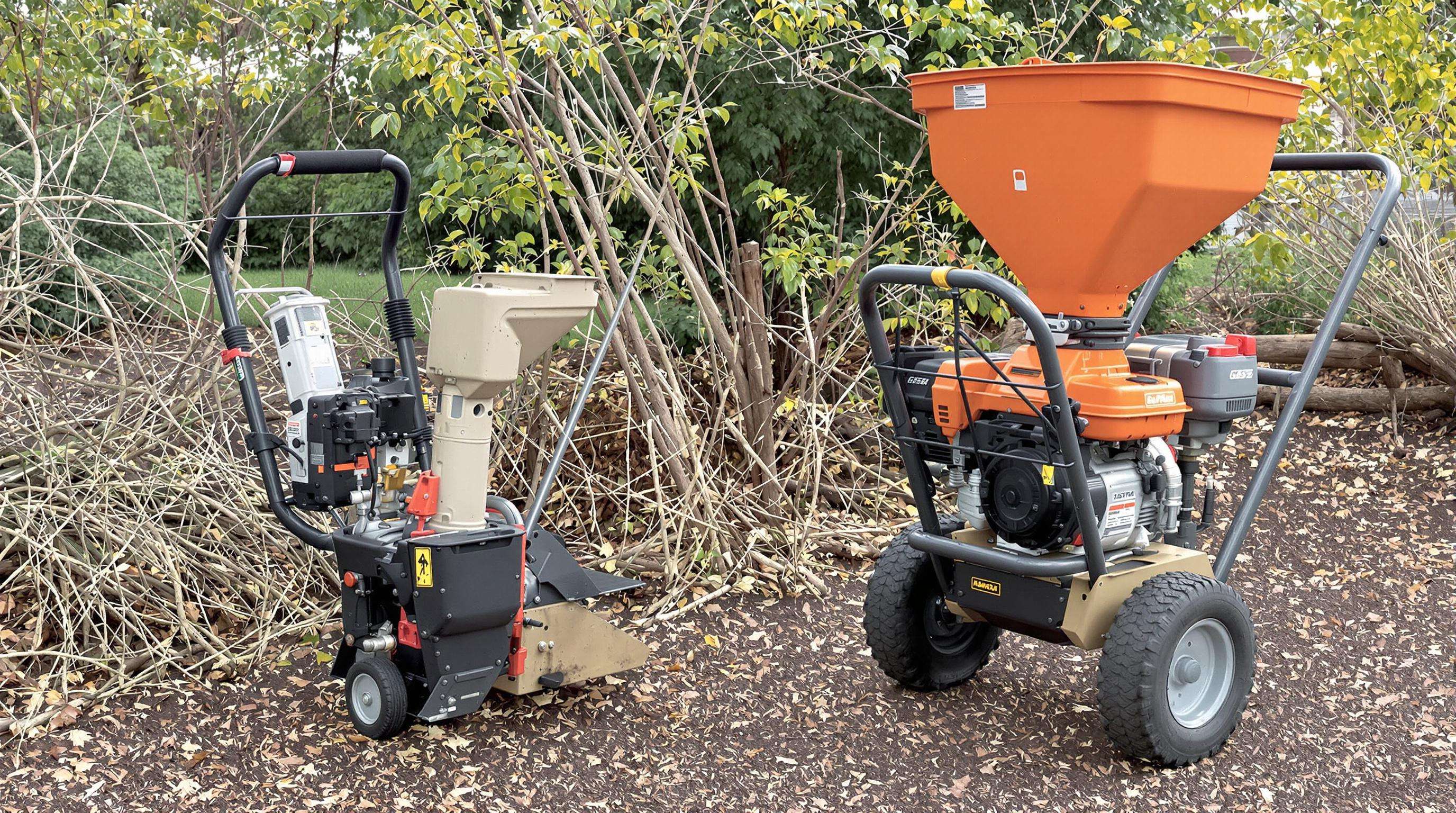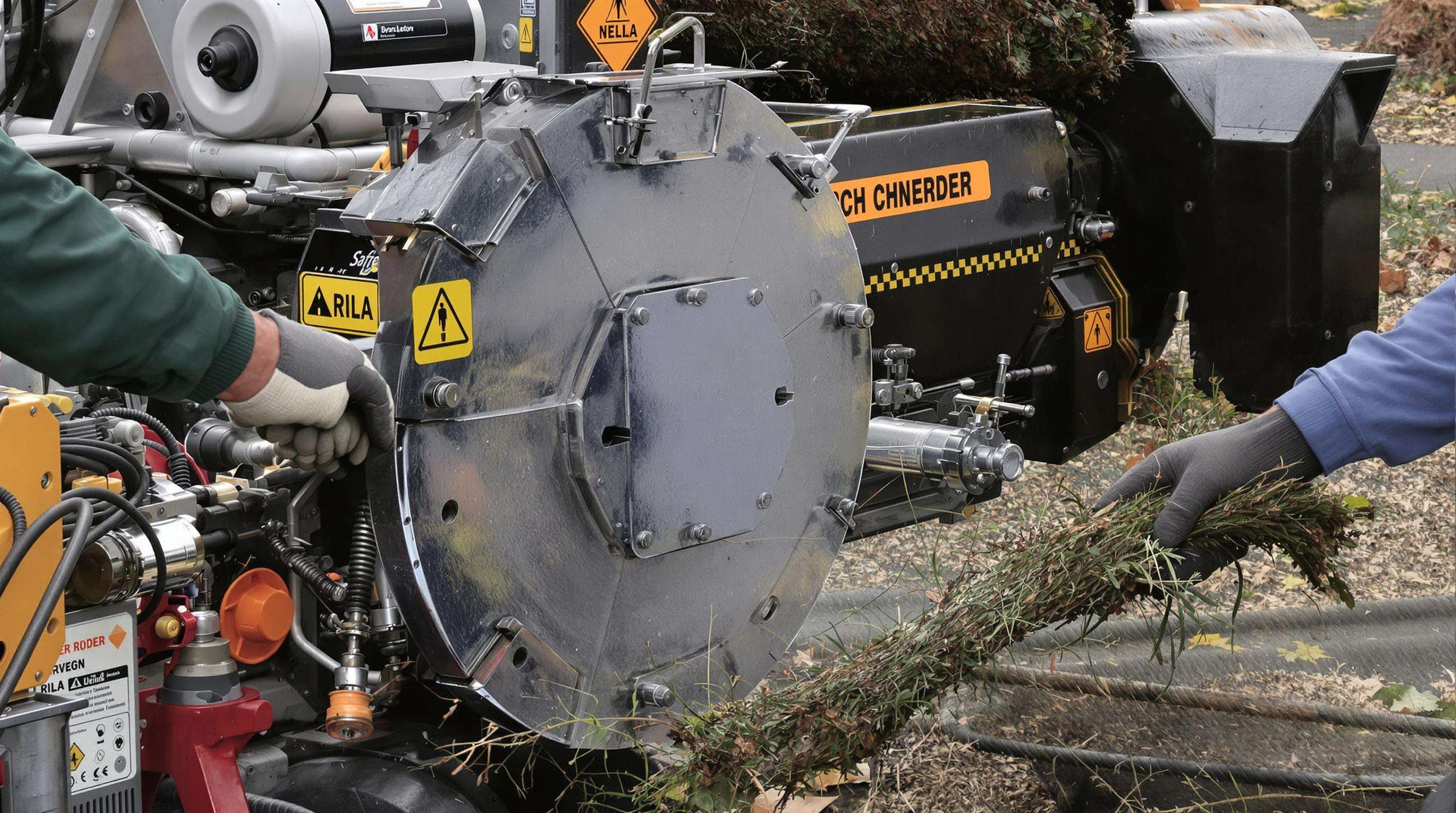Branch Shredder Fundamentals: Types and Power Sources Explained

Electric Branch Shredders for Small Yards and Low Noise
Great for city yards, electric branch shredders break down limbs up to 1.5 inches in diameter, and do so more quietly than gas-powered models (less than 85 decibels). They have corded and battery models and don’t need you to store fuel and do engine service every so often. Small and great for tight areas, but they do rely on being close to outlets. If you are a homeowner who wants to mulch your yard waste, the Patriot Products CSV-2515 is a great option as it has a compact design and runs very quietly, which is perfect for anyone who has less than a 0.5 acres of lawn to keep tidy.
Gas-Powered Shredders: Heavy-Duty Performance for Large Debris
Gas-fueled models tackle tough jobs, shredding branches and limbs up to 4 inches in diameter. High-torque motors in the blide penetrate hardwood and wet messes, ideal for large properties or professional use. They do not rely on electricity, so they can work without a power source, some require changing oil and maintaining an air filter. These machines are rated at higher than 95 decibels, which means you need hearing protection, and are best suited for acreage, storm clean up or commercial forestry work.
Critical Branch Shredder Features for Optimal Performance

Material Size Capacity: Matching Chipper to Branch Diameter
Select a shredder rated for branches larger than your typical debris. Residential units handle 1-2 inches, while commercial-grade models process 3+ inches. Exceeding capacity risks blade damage and motor strain—consistent overloading can shorten equipment lifespan by 30-40%. Opt for a model with 20% overhead capacity for occasional thick limbs.
Engine Power: Gas vs. Electric Torque Comparison
Gas engines generate higher torque (150-250 ft-lbs) for dense materials like oak and maple, while electric models peak around 120 ft-lbs but maintain consistent output without emissions. Choose gas for heavy-duty hardwood processing or electric for softer yard waste.
Feed Systems: Manual vs. Hydraulic Efficiency
Hydraulic feed systems increase productivity by 50% compared to manual feeding, reducing fatigue during extended use. Though pricier, they pay off within 18 months for professionals. Manual feed options suit intermittent homeowner use but require frequent branch repositioning.
Portability Designs for Home and Jobsite Mobility
Residential shredders (under 120 lbs) may need two people for slopes, while commercial models feature balanced axles and pneumatic tires for single-operator mobility. Wheelbarrow-style handles aid maneuverability in small yards, and industrial units can be fitted with towing kits for heavy-duty transport.
Safety Features and Maintenance Requirements
Key safety components include blade brake systems (<3-second stopping time) and discharge chute deflectors to reduce projectile risks. Regular maintenance involves carbide blade sharpening every 25 hours and annual gearbox oil changes. Hydraulic models with pressure release valves enhance OSHA compliance by preventing hazardous feedback during jams.
Top 5 Branch Shredders in 2025: Expert Reviews
12-inch Diesel Hydraulic-Feed Champion: Professional-Grade Reliability
This industrial shredder processes branches up to 12 inches with a turbocharged diesel engine, offering 25% better fuel efficiency than standard models. Its hydraulic feed ensures uninterrupted workflow, while vibration-dampening and water-cooled engineering prolong component lifespan.
Best Electric Shredder: Compact Design with Auto-Reverse Safety
Designed for suburban use, this model operates below 85 dB and features an auto-reverse mechanism to prevent jams and kickback. Its blade design processes 1.75-inch branches efficiently, reducing processing time by 40% compared to older models.
Gas-Powered All-Rounder: High-Torque Processing for Mixed Debris
With 8-12 HP output and vortex airflow technology, this shredder handles wet leaves, hardwood, and up to 3-inch branches. Dual-chute designs automatically separate mulch from woodchips, and enhanced air filtration prevents clogging.
Budget Pick: Lightweight Towable Chipper for Seasonal Use
Affordable and practical for periodic cleanup, this shredder processes 2-inch branches and weighs under 100 lbs. Its manual feed system allows tool-free blade access, and the UV-resistant hopper withstands seasonal storage.
Premium Hybrid Model: Energy Efficiency Meets Commercial Power
Combining electric start with gas endurance, this hybrid reduces emissions by 30% while maintaining 4-inch branch capacity. Automated power shifting optimizes fuel efficiency, and thermal sensors ensure consistent chip size.
Branch Shredder Buying Guide: Matching Machine to Your Needs
Yard Size and Debris Type: Calculating Your Processing Demands
- Small urban yards (under 0.25 acres): Electric shredders for twigs (<1 inch).
- Mid-sized properties (0.25–1 acre): Gas models handling 2–3 inches.
-
Large estates or wooded lots (1+ acre): Commercial diesel shredders for 4+ inches.
Wet or fibrous debris (vines, palm fronds) requires high-torque engines regardless of property size.
Cost-Benefit Analysis: Initial Investment vs. Long-Term Value
- Electric: Lower upfront cost ($200–$500) but shorter lifespan with heavy use.
- Gas: Higher initial price ($800–$2,500) but processes 3x more volume, reducing landscaping fees by 40%.
-
Commercial hydraulic: $3,000+ but lasts 8–12 years with maintenance.
Key factors: blade replacement costs ($60–200/year), theft risk, and anticipated waste reduction savings.
Data Insight: Power Consumption vs. Actual Chip Output Comparisons
More horsepower (HP) does not translate to more efficiency. A 24 HP machine plows through just 18-22 cubic yards per hour and sips 0.9 gallons of fuel — not much better than an 18 HP model making 16-20 yard with 0.6 gallons. Balanced torque distribution and blade design are even more important than brute power when it comes to cutting branches up to 4 thick.
Frequently Asked Questions
What size branches can a gas-powered shredder handle?
Gas-powered shredders can handle branches up to 4 inches in diameter, making them suitable for larger debris and professional use.
Are electric shredders quieter than gas-powered ones?
Yes, electric shredders operate at noise levels below 85 decibels, making them generally quieter than their gas-powered counterparts.
How often should I sharpen the blades of my branch shredder?
Blades should be sharpened every 25 hours of use to maintain optimal performance.
Can I use a branch shredder for vine or wet debris?
High-torque engines, often found in gas-powered models, are recommended for handling wet or fibrous debris such as vines.
What safety features should I look for in a branch shredder?
Essential safety features include blade brake systems, discharge chute deflectors, and pressure release valves, especially for hydraulic models.
Table of Contents
- Branch Shredder Fundamentals: Types and Power Sources Explained
- Critical Branch Shredder Features for Optimal Performance
-
Top 5 Branch Shredders in 2025: Expert Reviews
- 12-inch Diesel Hydraulic-Feed Champion: Professional-Grade Reliability
- Best Electric Shredder: Compact Design with Auto-Reverse Safety
- Gas-Powered All-Rounder: High-Torque Processing for Mixed Debris
- Budget Pick: Lightweight Towable Chipper for Seasonal Use
- Premium Hybrid Model: Energy Efficiency Meets Commercial Power
- Branch Shredder Buying Guide: Matching Machine to Your Needs
- Frequently Asked Questions

